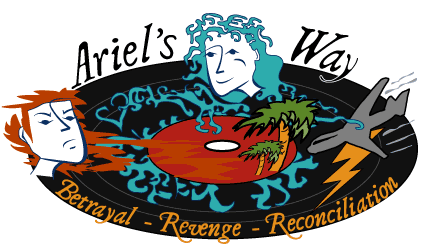The Friends
Council on Education (FCE) is an association of Quaker schools and
educators, embracing more than 100 schools and colleges in the US and abroad.
Among its many activities, FCE organizes an annual fall gathering for heads of
Friends schools (pre-K through high school). Drew Smith, Executive Director of
FCE, invited me to share the story of Ariel’s
Way at this year’s fall gathering, which was held at Pendle Hill, the Quaker retreat center near
Philadelphia. I was delighted and honored to be asked to speak, and was
especially pleased that Jessica Harris could join me in presenting, “What Love
Did: The Ariel’s Way Musical at
Carolina Friends School.”
 |
| Speaking at the heads of schools conference |
Heads of 48 schools attended the conference and many said
how moved they were to learn about the process that gave rise to the two
productions of Ariel’s Way that Carolina Friends School has put up—the 2005
high school production and the 2010 alumni/professional production. It was
particularly special to reconnect with colleagues Mike Hanas (who introduced me) and John Baird. Both educators are former heads of Carolina Friends, now leading San Francisco Friends
School and Westtown School, respectively.
 |
| Jessica Harris as Ariel's Way dancer/choreographer |
Jessica and I organized our remarks under five broad
headings. I addressed the first three topics: how AW developed and connected
curriculum, how AW widened and deepened community, and how AW presented and
expressed the school’s mission and values. Photos, stories, and short videos brought this
part of the presentation to life.
Then Jessica shared how AW summoned and spotlighted the
individual gifts of the cast and crew. She read a statement written for the
occasion by actor
Lucius Robinson, who played Victor in the alumni production. In part Lucius
said, “My experience with this show was defined by collaboration, trust, and community
. . . I learned at Carolina Friends School that we are at our best when we . .
. strike each other like lightning and hold one another close during the
thunder.”
 |
| Lucius Robinson as Victor |
Jessica also talked about how working as the Ariel’s Way choreographer opened up new
professional opportunities for her in New York City. She further reflected on
the confidence and the sense of creative collaboration she gained from her
years at a Friends school—and how that background led not only to her becoming
a founding member of Shen Wei Dance
Arts but also to her establishing Decision
Harmony, a company that uses movement to help professional organizations
optimize their decision-making process.
In conclusion, I shared how writing Ariel’s Way helped me resolve the grief and anger I grappled with
after a campus tragedy. Ariel’s Way
shows how “art and imagination can transform anger, and story and song can
transform sorrow” from crippling emotions to forces for creative
transformation. Indeed, “this is precisely what theatre, at its best, aims to
do.”
 |
| L-R: Mike Hanas, Jessica Harris, Jim Henderson, John Baird |
“Art’s alchemy made something beautiful of the saddest day,
and years, of my life and of my school’s history.” At the same time, Ariel’s Way “offers a distinctive way to
appreciate, express, and share the vision of a world transformed by the power
of love.”
Heads of eight or ten school heads took production materials to
share with their theatre departments. Mike, John, Jessica, Drew Smith and I are hopeful that
future productions of Ariel’s Way
will be forthcoming at other Friends schools.








 t
t